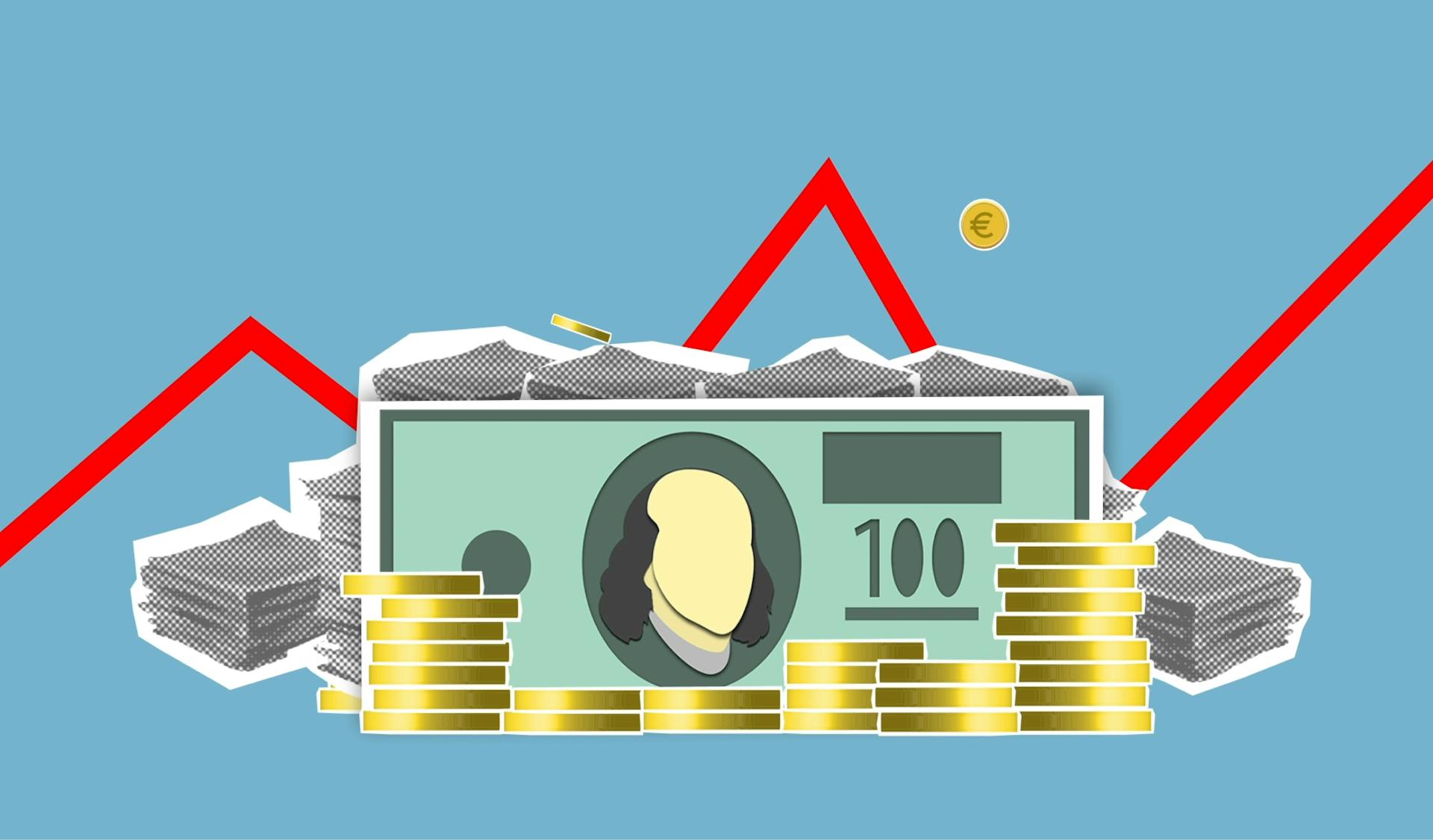
A fund of venture capital funds, also known as a fund of funds, is a type of investment vehicle that pools money from multiple investors to invest in a portfolio of venture capital funds.
It allows individual investors to gain access to a diversified portfolio of venture capital funds, rather than having to invest directly in individual startups.
This approach can be beneficial for investors who want to spread their risk and gain exposure to a variety of industries and geographies.
By investing in a fund of venture capital funds, investors can tap into the expertise of professional venture capital managers and gain access to a broader range of investment opportunities.
What is Venture Capital
Venture capital is a type of equity financing that helps small companies raise funding before they start operations or earning revenues. This funding comes from private equity investment vehicles called venture capital funds.
Venture capital funds focus on high-risk, high-return investments in firms with growth potential, and they take an active role in guiding these companies. They often hold a board seat and play a hands-on role in management and operations.
A fresh viewpoint: Hedge Fund vs Private Equity vs Venture Capital
VC funds have a barbell approach to investing, making small bets on many startups, hoping that at least one will achieve high growth and reward the fund with a large payout.
The venture capital industry invested a record $136.5 billion in American startups by the end of 2019, with nearly 11,000 deals completed that year. The median fund size is about $82 million, while some funds closed out the year with $1 billion in commitments.
Venture capitalists fund various types of businesses, from dotcom companies to biotech and peer-to-peer finance companies, through a fund that takes in money from high-net-worth individuals and companies seeking alternative investments exposure.
Here are some key statistics on venture capital funds:
- Record $136.5 billion invested in American startups by the end of 2019
- Nearly 11,000 deals completed in 2019
- Median fund size: $82 million
- 11 funds closed out the year with $1 billion in commitments
Venture Capital Firms and Funds
Venture capital firms and funds play a crucial role in the venture capital ecosystem, investing in a wide range of businesses, from dotcom companies to biotech and peer-to-peer finance companies.
According to PitchBook, the venture capital industry invested a record $136.5 billion in American startups by the end of 2019. This is a significant increase from previous years, with the total number of venture capital deals reaching nearly 11,000, an all-time high.
The median fund size for venture capital firms is around $82 million, with some funds closing out the year with $1 billion in commitments, such as those from Tiger Global, Bessemer Partners, and GGV.
Venture capital firms typically focus on high-growth potential companies, taking an active role in their investments by providing guidance and often holding a board seat.
The venture capital industry is becoming increasingly popular, with investors seeking high-risk, high-return opportunities. Venture capital funds aim for a gross internal rate of return around 30%, although the expected return varies based on industry and risk profile.
Venture capital firms like Sapphire Ventures have invested in over 170 companies globally, resulting in more than 30 public listings and 45 acquisitions.
Here are some notable venture capital firms and funds:
- Sapphire Ventures: Invested in over 170 companies globally, resulting in more than 30 public listings and 45 acquisitions.
- Northgate Capital: Manages approximately $4.8 billion in venture capital and private equity.
- Aldea Ventures: A pan-European venture capital platform investing in early-stage companies.
- Blue Future Partners: A day-one partner to emerging fund managers globally.
- Isomer Capital: Backing Europe's VC champions early and doubling down on their breakout companies.
These firms and funds are just a few examples of the many venture capital players in the market, each with their own unique investment strategies and focus areas.
Investment and Returns
Venture capital funds typically aim for a gross internal rate of return around 30%, with some funds expecting returns between 10 and 20% per year, net of expenses.
The two and twenty fee arrangement is a common standard in venture capital and private equity, where 2% of AUM is taken as an annual management fee, and 20% of profits made above a certain benchmark are taken as a performance fee.
Investors can expect to make returns when a portfolio company exits, either in an IPO or a merger and acquisition, with the fund keeping a percentage of the profits, typically around 20%, in addition to the annual management fee.
A fund-of-funds approach can help mitigate risk by investing in a basket of more than 10 scrutinously selected funds that in turn each invest in 20 companies on average, resulting in higher average returns than other investment categories.
The target return for a typical venture capital fund-of-funds is between 10 and 20% per year, net of expenses, on an annual basis.
Here's a summary of the target returns for a typical venture capital fund-of-funds:
Investment
We only partner with the consistently best-performing funds in the venture capital and growth equity market, ensuring a spread across regions, sectors, and industries. This means you invest not only in Europe but also in strong technology ecosystems like Silicon Valley and Israel.
Our fund-of-funds actively keeps an eye on major trends, such as the rise of AI and machine learning, to benefit from the next big wave of innovation. We partner with top investors in these sectors to make the most of emerging opportunities.
Nothing ventured, nothing gained. We're committed to taking calculated risks to achieve higher returns for our investors.
Venture capital investments are considered high-risk/high-return opportunities, and our fund-of-funds is no exception. We're willing to take on this risk to potentially generate large positive returns for our investors.
We review hundreds of business plans to find potentially high-growth companies that align with our investment mandates and the expectations of our investors. This thorough research helps us make informed investment decisions.
Our annual management fee is usually around 2% of assets under management, which helps pay for the salaries and expenses of our general partner. This fee structure ensures that our fund's manager is incentivized to generate strong returns for our investors.
For more insights, see: Management of Working Capital
Venture Capital Returns
Venture capital funds typically aim for a gross internal rate of return around 30%, but this can vary based on industry and risk profile.
Investors of a venture capital fund make returns when a portfolio company exits, either in an IPO or a merger and acquisition. Two and twenty (or "2 and 20") is a common fee arrangement that is standard in venture capital and private equity. The "two" means 2% of AUM, and "twenty" refers to the standard performance or incentive fee of 20% of profits made by the fund above a certain predefined benchmark.
The expected return for a venture capital fund-of-funds is between 10 and 20% per year, net of expenses, on an annual basis. This is achieved by investing in a basket of more than 10 scrutinously selected funds that in turn each invest in 20 companies on average.
A fund-of-funds approach allows for diversification, reducing risk through the spread mechanism. By investing in both technology companies that are just starting up with venture capital funds, and in tech companies that are already close to going public, with growth equity funds, higher average returns can be realised.
Here's a breakdown of the typical fee structure for a venture capital fund:
Keep in mind that these fees can vary, and it's essential to understand the fee structure before investing in a venture capital fund.
Performance and Data
Early vintages of Fund-of-Fund investing in US and European VCs show strong financial returns across the top quartile, median, and third quartile.
In fact, data from Europe and North America reveals that early vintages perform exceptionally well, with strong financial returns evident across the board.
Later vintages, starting from 2016 onwards, also show reasonable performances, although they are still quite early in their fund lifecycle.
This means that investors can expect to see solid returns from Fund-of-Fund investments, even in later vintages.
Frequently Asked Questions
What are the fees for venture capital fund of funds?
Venture capital fund of funds typically charge a 2% annual management fee and take 20% of the fund's profits as performance fees. This standard fee structure is common in the industry, but specifics may vary depending on the fund.
What is the return of venture capital fund of funds?
Top-performing venture capital funds have delivered average annual returns of 15-27% over the past decade, significantly outpacing the S&P 500's 9.9% annual return
Sources
- https://www.investopedia.com/terms/v/vcfund.asp
- https://medium.com/mountside-ventures/the-definitive-guide-to-venture-capital-fund-of-funds-50559ab57f01
- https://techcrunch.com/2023/06/29/fund-of-funds-lps/
- https://www.vcstack.io/blog/deep-dive-intro-to-fund-of-funds
- https://www.marktlinkcapital.com/en/venture-capital/fund-of-funds
Featured Images: pexels.com


